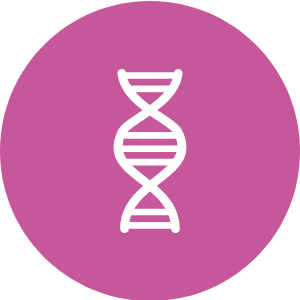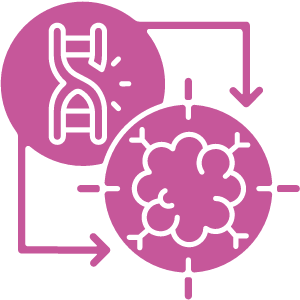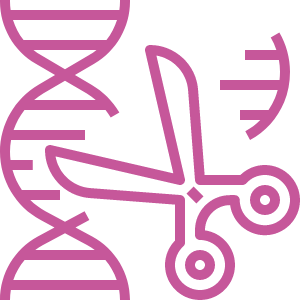Gene Therapy | How does gene therapy work?
 |
Gene Addition |
|
|
||
 |
Post-Transcriptional Gene Silencing |
|
|
||
 |
Gene Editing |
|
|

Base Editing
- Base editing targets single point mutations and creates precise changes in genetic code. These changes can silence a disease-causing gene or help activate a specific gene.
- Base editors don't cut double-stranded DNA but instead deliver an additional enzyme to a desired sequence to change the base on one strand.
- Finally, cellular repair proteins recognize the base change and convert it to a permanent mutation. Cells can take on new functions normally, and conditions caused by specific mutations potentially can be cured.
Gene Therapy | How is genetic material delivered?
For any of these four gene therapy platforms to work, the genetic material needs to be delivered to a person’s cells. Often, a viral or non-viral genetically-engineered vector, a "delivery vehicle," carrying the genetic material is used. Modified viruses with the infectious capability turned off are used as vectors, because of their natural ability to invade the target cell, delivering the new gene. The vector can be introduced in one of two ways — outside the body (ex vivo) or inside the body (in vivo). In this way, the gene therapy occurs in the organ or tissue relevant to the disease.
What is ex-vivo gene therapy?
When it's performed ex vivo (outside the body), the vector with the corrected gene is introduced to a sample of a patient's cells in a laboratory setting, and then transplanted back into the patient. For gene editing or base editing, the editor molecules can be directly delivered to cells outside the body even without a vector for one-time genetic modification.
What is in-vivo gene therapy?
When it's performed in vivo (inside the body), the vector carrying the therapeutic payload, such as a gene, a gene silencer or a gene editor, is injected directly into the patient's body.
Although still relatively new and often considered experimental, gene therapy is a promising treatment option for a number of diseases that don’t respond well to other therapies, including inherited conditions — such as immunodeficiencies, metabolic disorders and hematologic disorders — and certain types of cancers.
Gene Therapy | What are the potential risks of gene therapy?
The potential risks associated with gene therapy depend upon the type of therapy, type of delivery mechanism (vector) and the way in which it is delivered to the cells. They may include:
- a negative immune system reaction
- complications from inadvertently targeting the wrong cells
- adverse effects associated with inserted genetic material
- unexpected gene expression
The Food and Drug Administration and the National Institutes of Health closely monitor gene therapy trials, and techniques are continually researched and refined. Patients are closely monitored by their treatment team for years after gene therapy.


